The moon has shattered, and, unsurprisingly, the world is changed forever.
Once-thriving cities slowly rust and wither, and people band together in groups of mercenaries, piloting massive mechs called Arsenals and taking on whatever tasks net them the biggest profit.
These tasks usually involve destroying AI-controlled machines, tools that once aided humanity but now, corrupted by an alien force, seek only to destroy it.
Is this an anime? An action flick? No! It’s Daemon X Machina — which is to say, it’s a bit of both, with some Armored Core thrown in for good measure.
In DXM, you blow up robots, then you blow up more robots, and then you blow even more (and bigger) robots. Sometimes you face off against other mercenaries when you aren’t listening to them share their life stories and talk philosophy. In between all this, you’re customizing your Arsenal to make it the best it can be.
Unfortunately, it seems the same care you put into building Arsenals wasn’t used to make the game a cohesive experience. Various elements, from worldbuilding and character development to combat and strategy, don’t quite coalesce the way they should, and it keeps the game from realizing its true potential.
Robots in the Skies
Creating the best Arsenal you can is at the crux of Daemon X Machina, which is no surprise to fans of the mech genre.
You’ve got several components to deal with, including the usual body bits, weapons, and processors. Each addition takes a bit of memory available to your Arsenal, and many components have attachments you can add to further enhance their performance, assuming there’s enough memory.
There’s a wide variety of ways you go about getting new parts, too. Some are unlocked as you go along, while others must be bought in the Orbital store using Credits earned through completing missions.
Scavenging is another — better — way to get new stuff, though, since you can often find much more powerful weaponry than you can buy. If not, you can sell it off for more Credits.
Deciding what to outfit your Arsenal with is one of the game’s finer points. Weapons come in several different types — not that you get access to many initially — and it’s up to you to determine what matters most.
Do you want a powerful but clunky laser beam or a fast and reloadable machine gun? What about a gun that does more damage but loads slowly? Homing missiles are nice, but grenades explode. But maybe the smart thing to do would be to prioritize defense and upgrade your shield.
Things get deeper thanks to the Pylons your Arsenal comes with. On top of the right-arm- and left-arm-weapons, you can add backup weapons to the left and right pylons, weapons you can swap out at any point during a battle using the direction pad.
Changing your build is fast and easy, plus you can save different builds to use in whatever situation arises. That’s especially good because while you might need to up your defense and give mobility a boost for one mission, emphasizing power and weapon versatility might work better for another.
You also get the option to fight outside your Arsenal, too. It wasn’t an option that seemed especially useful in most cases, but it does encourage you to experiment with surgery.
You can surgically modify your avatar to install weapons for arms, improve lower body functionality, and so on, and though it means you can fight using your avatar alone, it also improves aspects of your Arsenal.
Machine Learning
While the mech-building aspect isn’t necessarily as deep as other, similar games, that’s okay. The battles aren’t really complex enough to support building mechanics that go any deeper.
That isn’t to say they aren’t fun, though. Controlling your Arsenal feels intuitive and smooth, and it’s a joy just moving around each battlefield as you hunt down rogue AIs. Fighting rarely feels stale either, thanks to the huge variety involved in outfitting the Arsenal.
However, there is a definite sense that Daemon X Machina isn’t quite sure what kind of game it wants to be. It’s hard not to think a difficulty option would be a useful addition, something to let newcomers to this genre get their feet wet without much tension while rewarding those who want to push their Arsenal-building skills further.
Most of the time, fights are comparable to battles in a musou game: lots of enemies staring at you, waiting for you to kill them. Considering the majority of story missions involve wiping out X number of AIs, it does feel like there’s a lot of wasted potential here. The care put into building your Arsenal and the need to actually put that strategy to good use just don’t match up.
Moreover, defend “Position X” or escort “Thing Y” missions are few and far between, more likely to come up in free missions, so there is definitely a need for more variety here.
That doesn’t hold true when facing off against opposing mercenaries or AI-controlled humanoid mechs, though. Particularly with the former, you’ll be on your guard more often, having to make use of your well-considered bag of tricks, and that’s when DXM‘s combat really feels good.
The same isn’t exactly true for the big setpiece battles against Immortals, giant corrupt AIs that act as bosses in most cases. These fights are visually impressive and task you with managing resources more efficiently, but they also drag on too long, without being very challenging.
Once you figure out their limited attack patterns, which happens pretty quickly, it’s just a matter of going through the motions and attacking the right spots enough times.
That brings up one other minor annoyance: the lock-on feature. It improves as you upgrade your processor, but it’s a hindrance as much as a help. Locking on to an enemy means you’ll fire guns at it, but the reticule often shifts to new enemies as they come into view, and you can’t keep it situated on one foe. It also has no effect whatsoever on melee weapons, where you’ll zoom straight over them despite being locked on.
A World of Confusion
The world of Daemon X Machina is a genuinely interesting one, and it’s full of over-the-top personalities pursuing their own, usually conflicting, goals. That kind of setup tends to be promising and foreshadows an enjoyable narrative experience. In this case, though, it’s actually a hindrance.
I know, this is a mech game. It’s about blowing things up and making your giant robot the biggest, bad-asserest mech it can be. Story doesn’t usually come into play with these kinds of games, or if it does, it’s an afterthought that links missions together. The game would have been fine like that, too.
The thing is, Marvelous tried making Daemon X Machina‘s story interesting and puts it in front of you all the time — just, not in the right way.
Your avatar is a silent one who, when the game begins, comes out of a special kind of brain surgery enabling people to link with Arsenals for combat. There’s no indication this surgery takes people’s memories away, but the characters have a bizarre habit of simultaneously treating you like an amnesiac and assuming you know everything.
Basic information like what happened to the world gets told to you as if you had no idea anything existed before your surgery, when a cutscene would have sufficed — or better yet, a Souls or Metroid Prime style system where you can find more information about the world if you want to.
In fact, some kind of archive or glossary giving background about things like Sky Union and its rivals would have been a nice inclusion and one that fits in the world’s context.
That’s because important things like who specific mercenary groups are, why the people you’re working with act the way they do, and why these various organizations you take contracts from even exist, get passed over as if you know everything already.
What you’re left with is a lot of questions and a very (very) loose narrative thread tying together all the missions you take on.
It’s an unnecessarily frustrating setup that ends up making you not care about the world Marvelous tried hard to create. A less interesting and unique world would have been perfectly fine — more appealing, even — since we aren’t allowed to know much about how this one works anyway.
Chat Room
With all that, you’d think the characters don’t have much to say, or there isn’t a lot of interaction going on. Oh, how wrong that assumption is…
The moon falling obviously removed any sensible conversation inhibition people have, because they never stop talking — ever.
Despite that, they don’t always have interesting things to say.
Each mission comes with a pre-acceptance cutscene where you meet the other mercenaries taking part — well, sort of because they tend to overlook your existence.
These scenes show off a character’s personality and sometimes their motivations. However, in many cases, the personalities are a bit too overdone, and the scenes drag on unnecessarily, and you can’t advance the dialogue manually. Banter between parties isn’t very interesting when it doesn’t have any effect on the mission, relationships, or, well, anything.
For some reason, these will randomly switch to text conversations spoken by portraits. Presumably, this is when each mercenary gets in their Arsenal, but there’s no transition in the scene or even dialogue to suggest it, making these pre-mission scenes seem choppy on the whole.
Anecdotes on the Battlefield?
Where the dialogue really becomes a problem is on the battlefield, because it interferes with gameplay.
In every mission except the free, non-story missions, you’ll hear and see your various partner mercenaries carry on discussions about a variety of things, from what they think about the mission and what they were doing before they became mercenaries to commentary about their employers.
It’s all interesting stuff — if you weren’t trying to complete a mission. None of the conversations are suited to the situation at hand and would be better off as pre- or post-mission discussions.
Unless you’re playing in docked mode or have headphones on, you probably won’t hear everything they have to say, either because A.) you can’t hear it thanks to the game’s other SFX or B.) you’re focused on mission objectives, not reading reams of oh-so-tiny text at the bottom left of the screen.
The sequences outstay their welcome as well, to the point where they’re continuing to role after you’ve already completed an objective. The mission won’t advance until the dialogue stops, though, creating an annoyingly frequent discontinuity in the gameplay.
Fortunately, all these things are, while not exactly easy to overlook, somewhat forgivable thanks to the excellent combat and Arsenal-building mechanics.
Blending Styles
There’s no denying Daemon X Machina is a good-looking creation. Its art direction adds immensely to the overall feel of the game and sets it apart. Battlefields look fresh and appealing — even when you’ve seen the same basic one countless times.
There were some times where the game stopped briefly when a lot of action, movement, and light effects appeared on screen, though, mostly during battles with Immortals.
The human designs are an interesting mix of anime and Western styles, almost like anime had a baby with Borderlands. It’s a fresh approach to an often worn-out style, and something that hopefully doesn’t end with DXM.
The soundtrack is a bit more difficult to pin down. The mostly-bereft Hanger area doesn’t have a theme, there’s little musical accompaniment to pre-mission cutscenes, and what you do hear during battle gets overshadowed by the action.
The Verdict
Pros:
- Satisfying and deep enough mech building
- Intuitive combat that’s just plain fun
- Fresh and appealing style
Cons:
- Confused and unnecessary narrative direction
- Baffling decisions for when and where to spew forth exposition
- Disconnect between Arsenal building and actual combat difficulty
Daemon X Machina is a strange hybrid. From a critical perspective, it’s one that seems like it needed more time baking before it could be called truly finished. There are a lot of annoying elements that add up over time, and the combat really should have more variety and difficulty.
Does that mean you won’t enjoy the game? No, it probably doesn’t. Combat is what the game is all about, and it’s fun — even if your partners never shut up, and shooting toothless robots doesn’t take full advantage of your time and effort.
Still, at the end of the day, Daemon X Machina doesn’t live up to its full potential, and that’s a shame because it has a lot going for it. Here’s hoping for a new entry in the franchise that builds on this one’s shortcomings.
[Note: A copy of Daemon X Machina was provided by Nintendo for this review.]

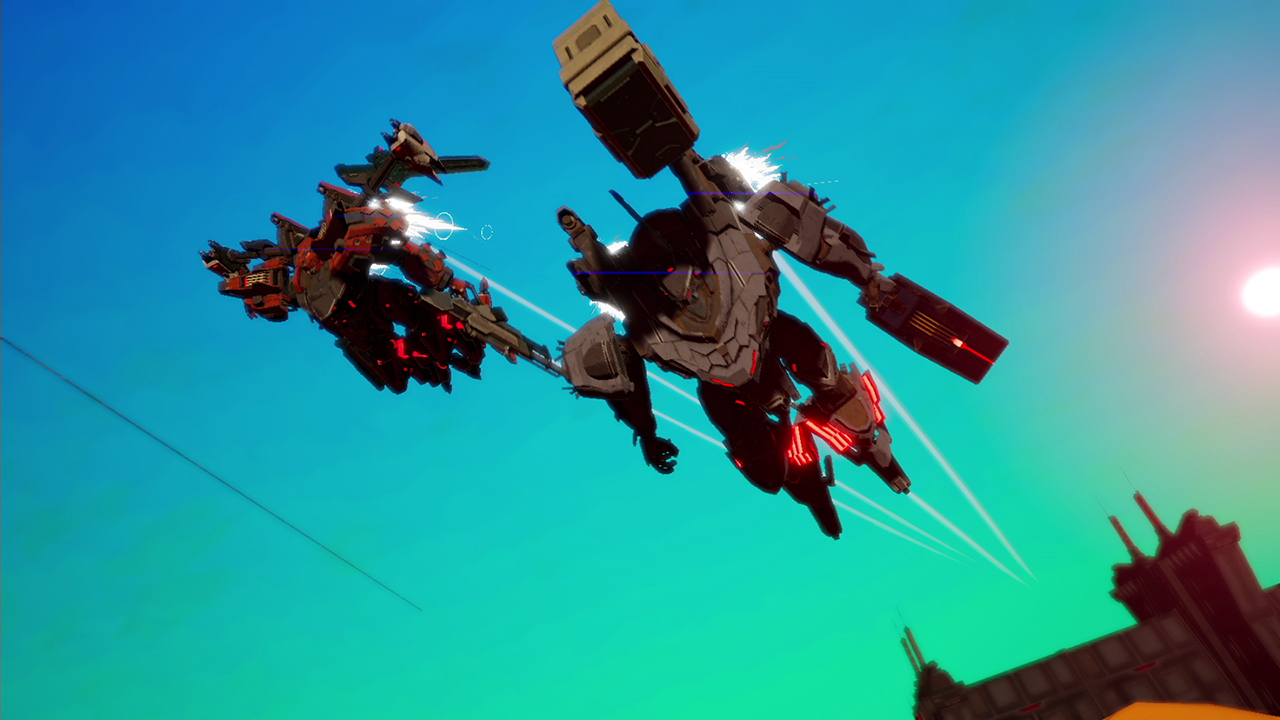
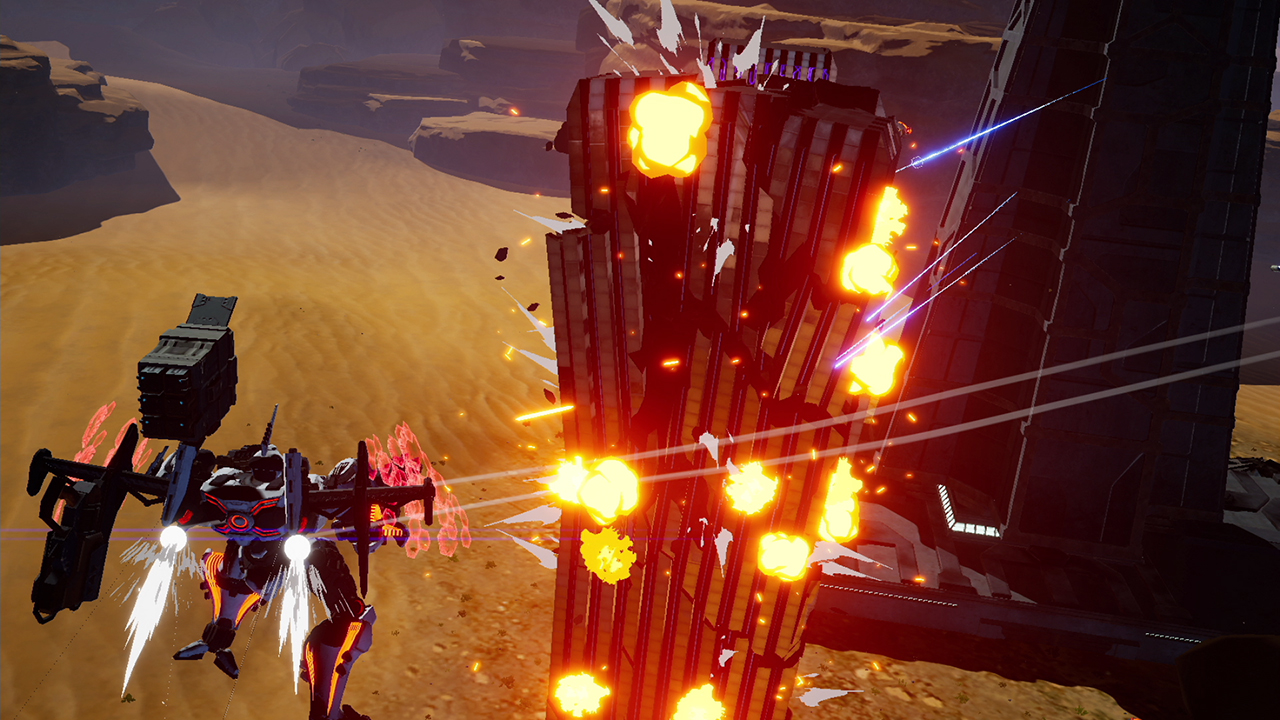
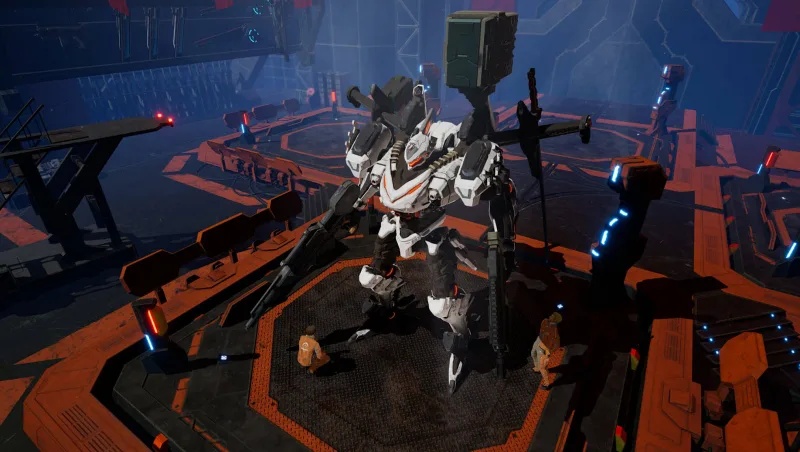
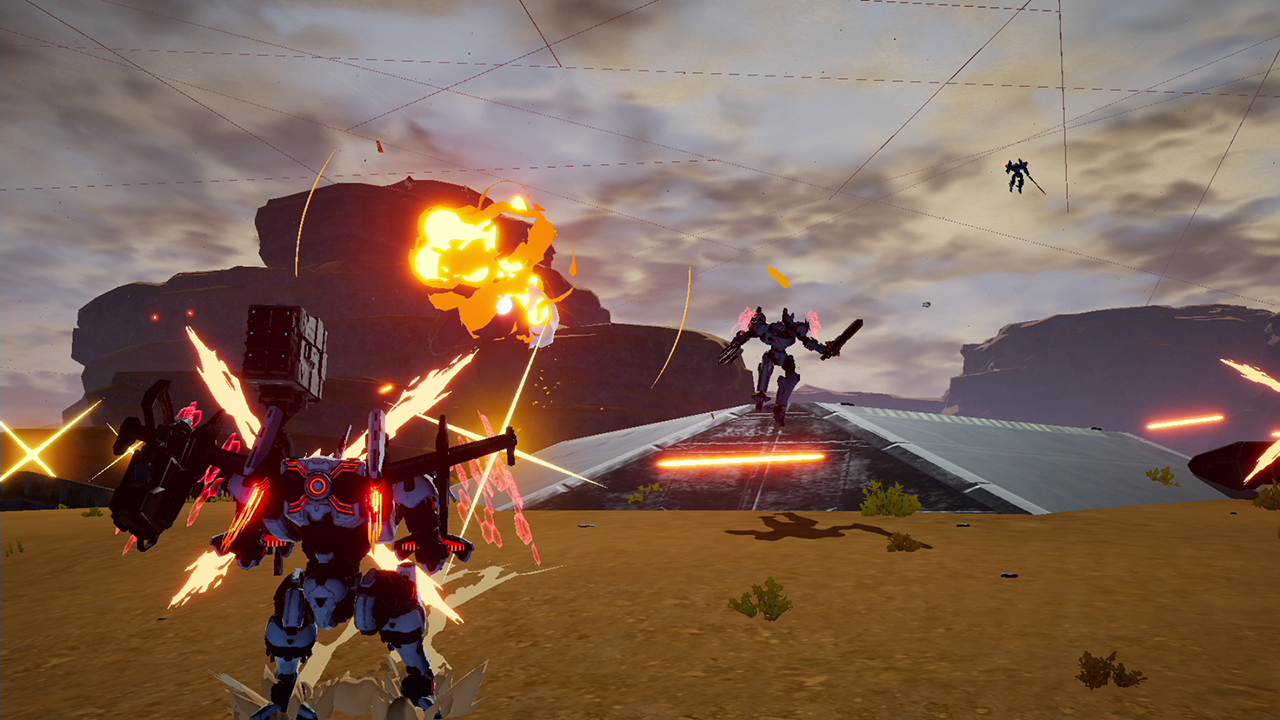
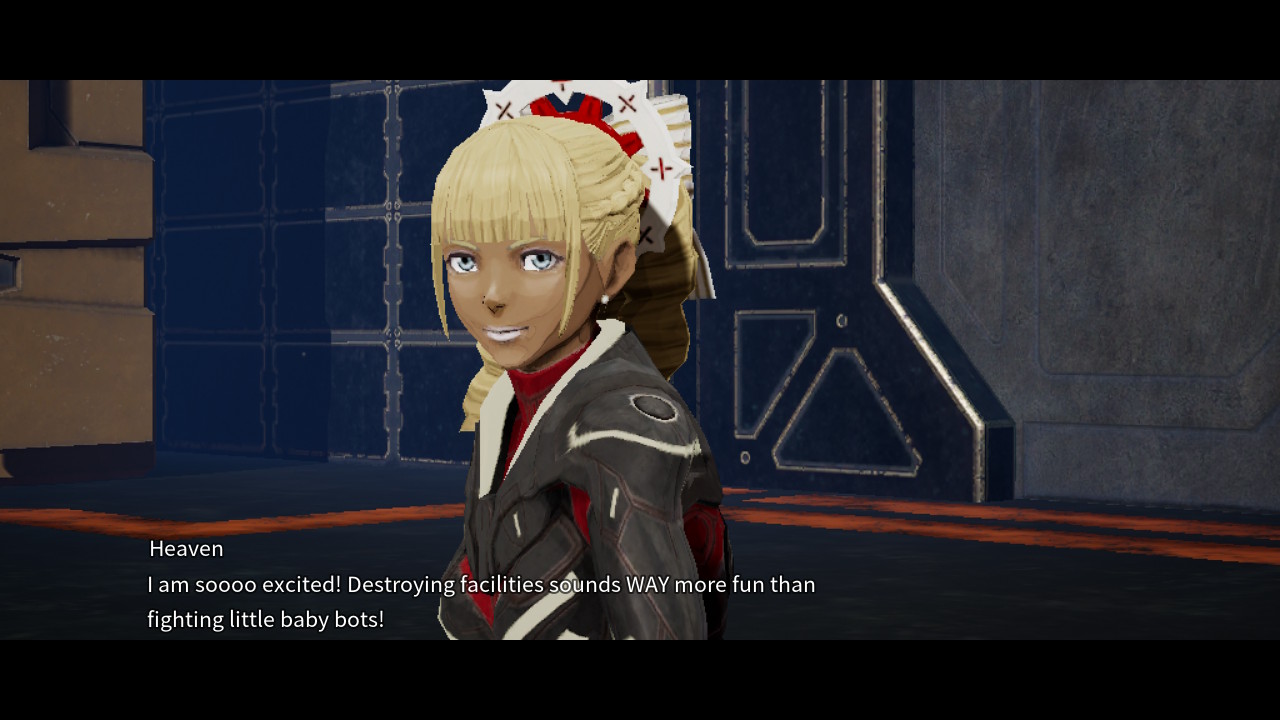
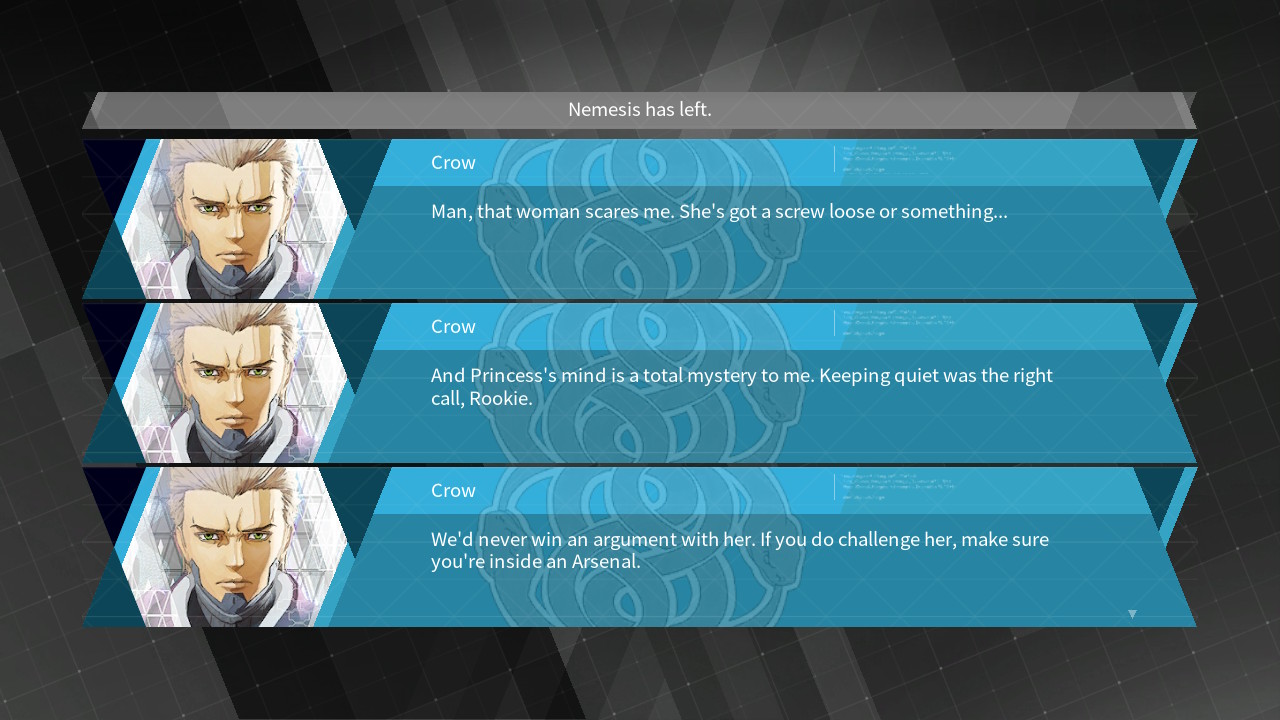
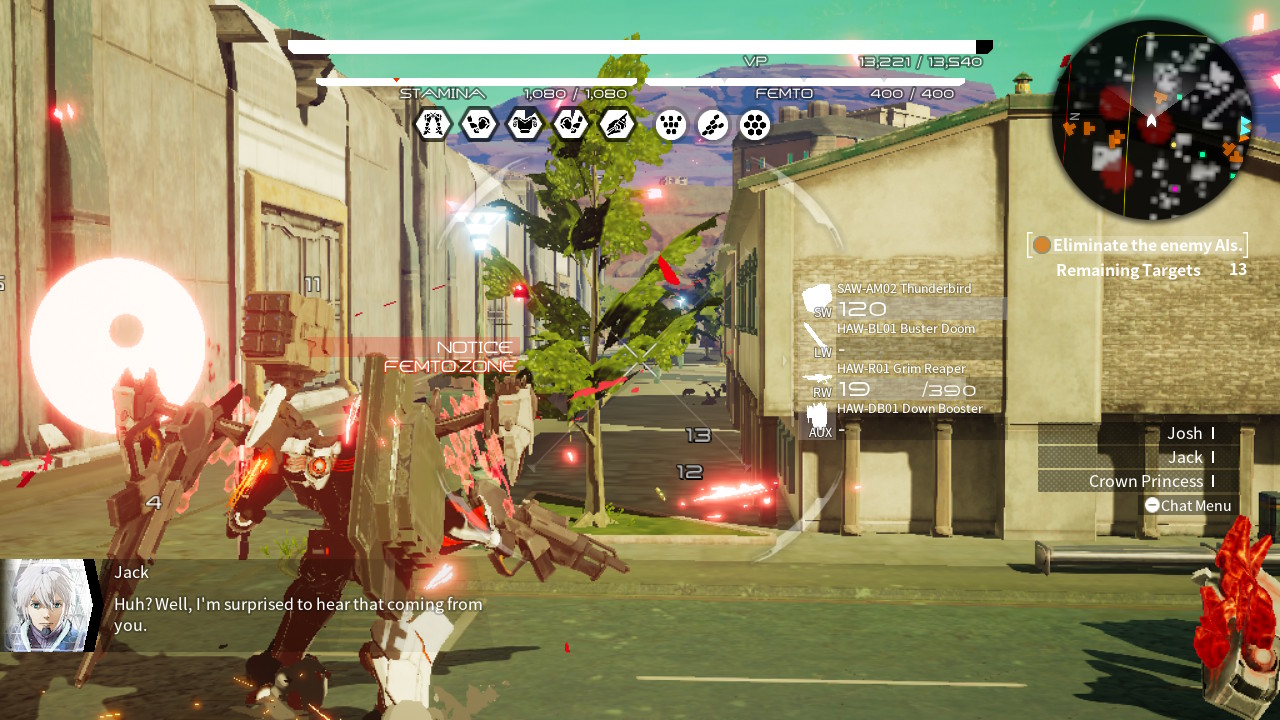





Published: Sep 18, 2019 02:16 pm